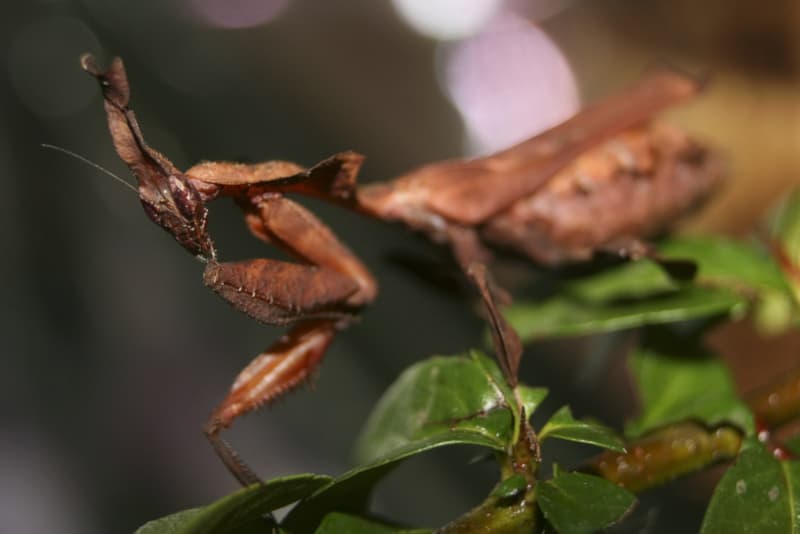
Ghost Mantis Facts
- Even among the many related species, the remarkable Ghost Mantis stands out for its mastery of camouflage.
- However, fortunately for it, this rather impressive creature currently inhabits a moderately wide range of the earth.
- Yet, regardless of its great impressiveness, it also ranks as a smaller than average representative of its genus.
- Yet, sadly, its very distinctiveness for these reasons also makes it one of the most popular mantises in captivity.
Related Articles
Ghost Mantis Physical Description
The body shape of the Ghost Mantis has also evolved to blend in with its environment. Indeed, it looks rather like dry, withered branches or leaves on bushes and trees. Phyllocrania paradoxa has incredible camouflage so as to appear as dead, dried-up leaf material.
The head is also elongated, the prothorax is long and the limbs have leaf-like protrusions. The body only reaches about 2 in (5 cm) in length.
The Ghost Mantis also has a forewing that looks like a dry leaf, and the creases in the wings are actually shadings of pigment.
This insect is most commonly a dark brown but can be a lighter shade of brown, sand-color, or even green.
It also displays a moderate degree of sexual dimorphism, with females being slightly larger in size than males.
- Kingdom: Animalia
- Phylum: Arthropoda
- Class: Insecta
- Order: Mantodea
- Family: Hymenopopidae
- Genus: Phyllocrania
- Species: P. paradoxa
Ghost Mantis Distribution, Habitat, and Ecology
The Ghost Mantis or Phyllocrania paradoxa is a mantis species native to a rather wide range of Africa, including Madagascar.
The insect primarily inhabits regions such as bushes, shrubs, trees, and many similar areas, as long as these remain dry.
Its extraordinary camouflage not only serves to surprise its prey but to evade its own predators as well.
Like all mantises, it feeds entirely as a carnivore. For this, it also remains extremely effective, due to its camouflage.
Species Sharing Its Range
Check out our other articles on Bay of Islands, Naked Man Orchid, Clouded Sulphur Butterfly, 7 Breathtaking Beaches of the World
